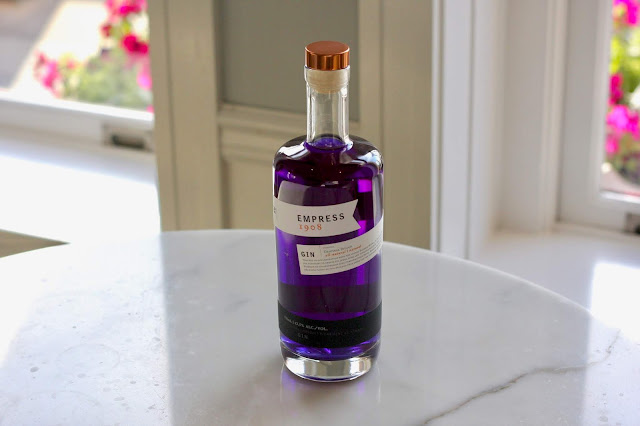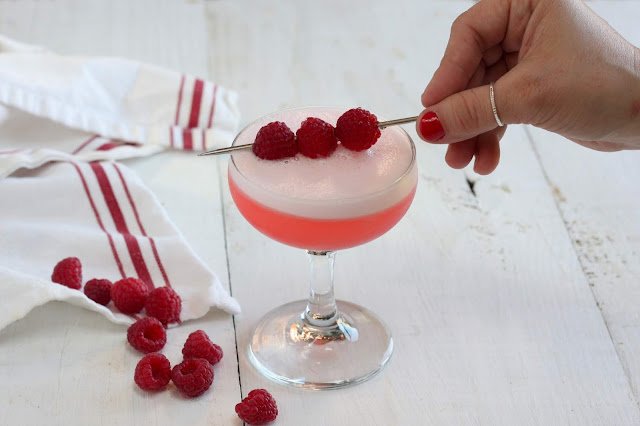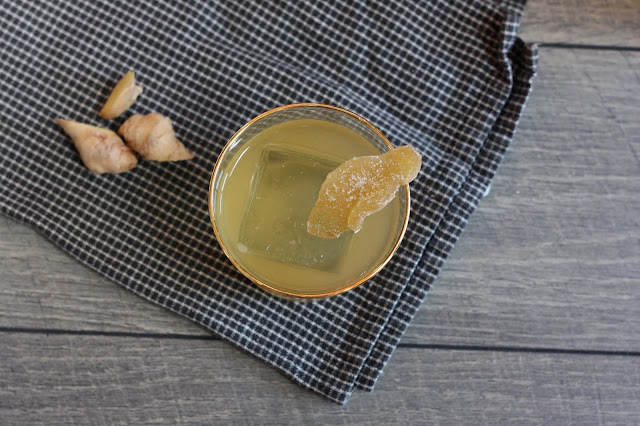Last week I had the opportunity to go on my first industry trip to Victoria, British Columbia, sponsored by Empress 1908 Gin. We stayed at the historic Fairmont Empress Hotel, which was the inspiration for the gin's creation. They really spoiled us. We had beautiful rooms at the Empress, a whale watching trip, a morning at the spa, a champagne tea, and two lovely dinners. And of course we visited Victoria Distillers, where Empress 1908 is made. It's a gorgeous distillery, with large windows looking out over the Salish Sea. They make a number of spirits there, including two other gins that are locally quite popular. But Empress 1908 has been their most popular product by far, and it's easy to see why.
I think it's safe to say that Empress is one of the most unique gins out there. You may have already noticed it on a liquor store shelf or in Instagram photos. Among an array of clear gins, its deep indigo color is hard to miss. But Victoria Distillers didn't set out to make a purple gin. They wanted to make a limited-edition gin to celebrate the renovation of the Empress Hotel (named for Queen Victoria, Empress of India). The Empress is famous for their tea, so the distillers turned to the tea menu for inspiration. They chose the Empress Blend black tea to infuse the gin, but they were also inspired by a tea blend called "Blue Suede Shoes" that contained butterfly pea flowers and was, as the name suggests, blue. So they added the flowers to the gin as well, giving it a gorgeous purple hue.
When Victoria Distillers started experimenting with Empress 1908 in cocktails, they discovered what drinkers of butterfly pea tea had already known for some time - that with the infusion of the flowers, the gin actually changes color when an acid like lemon juice is added, from bluish to pinkish. It's magical and fun, and definitely the thing that attracts most people to Empress. But it's also an excellent gin, with a style between a typical London Dry and an American gin with notes of juniper, tea, and grapefruit. If you think you're not a gin person, this lovely bottle might change your mind.
I had several great cocktails made with Empress 1908 while in Victoria. It's fantastic in a Bee's Knees or a French 75. When you make a Negroni Bianco with it, it keeps its bluish purple color, while a traditional Negroni comes out a deep garnet red even prettier than its usual bright crimson. One favorite was a Gin Smash made with mint and lavender from the Fairmont Empress' rooftop gardens. And of course we had lots of gin and tonics. Empress recommends Fever Tree tonic and a slice of grapefruit for garnish.
For my first cocktail made at home with the Empress, I knew I wanted to use eggwhites because the purple color looks so good with that layer of foam. I decided to double down on all things purple by adding a lavender simple syrup and bit of Creme de Violette to a traditional gin sour. The result is a colorful, floral drink pretty enough to do justice to this wonderful gin. Thank you again to Empress 1908 for having me in Victoria!
Queen Victoria
2 oz. Empress 1908 Gin1/4 oz. Creme de Violette
3/4 oz. lemon juice
1/2 oz. lavender simple syrup*
1/2 oz. eggwhite
Combine all ingredients in a shaker with ice and shake until chilled and combined, about 20 seconds. Strain out ice and dry shake for another 30 seconds or so. Fine-strain into a coupe glass and garnish with lavender buds and flowers.
*For lavender syrup, make a typical 1:1 simple syrup and pour it into a jar with several sprigs of fresh lavender. Let sit overnight to infuse.
















